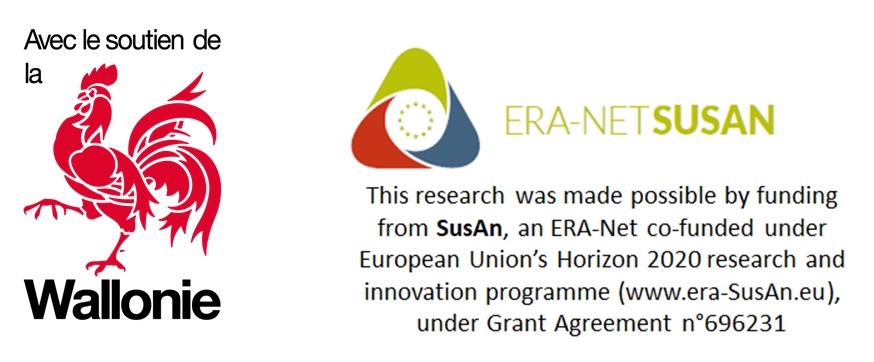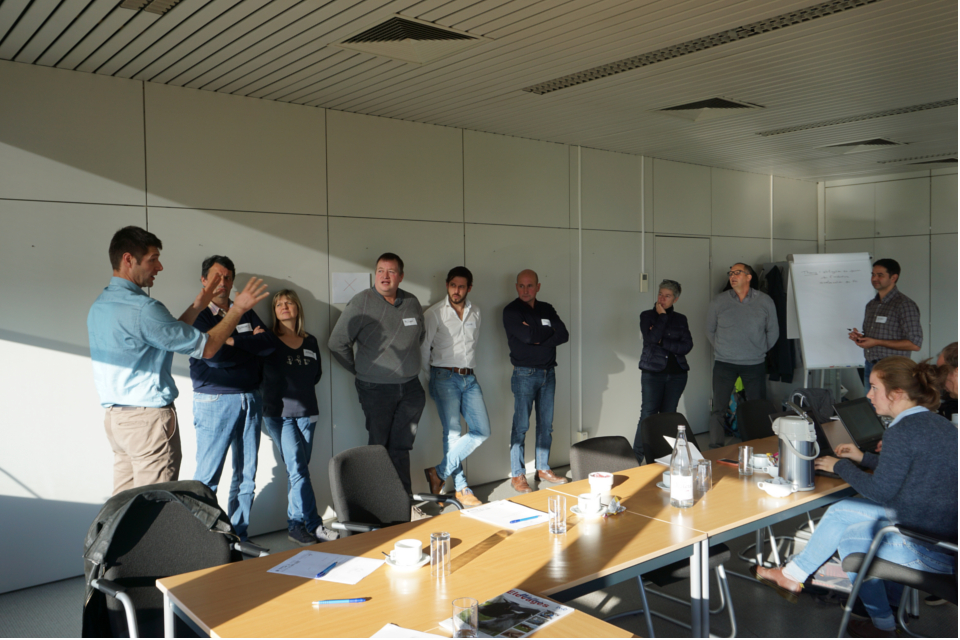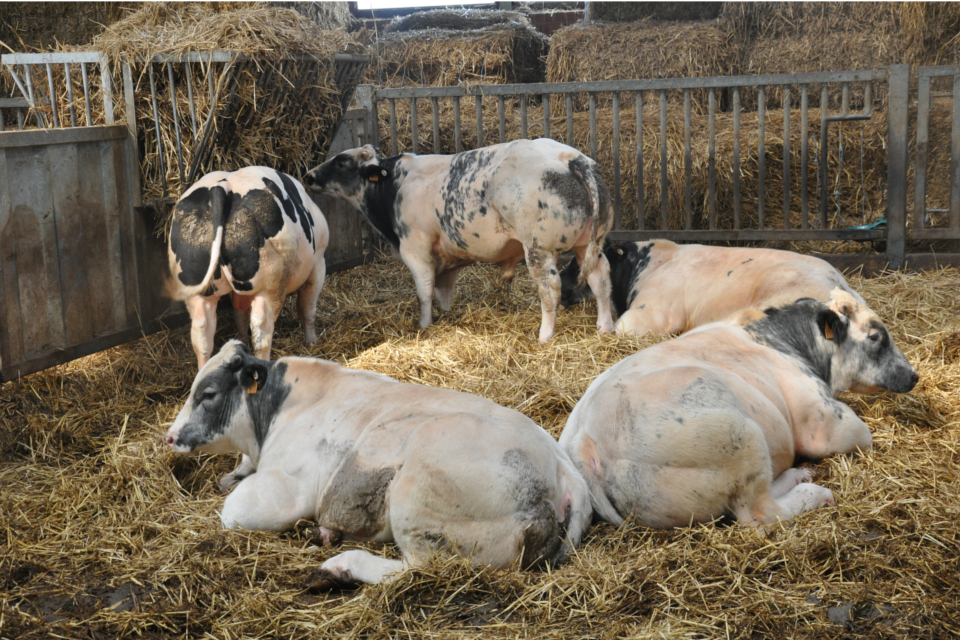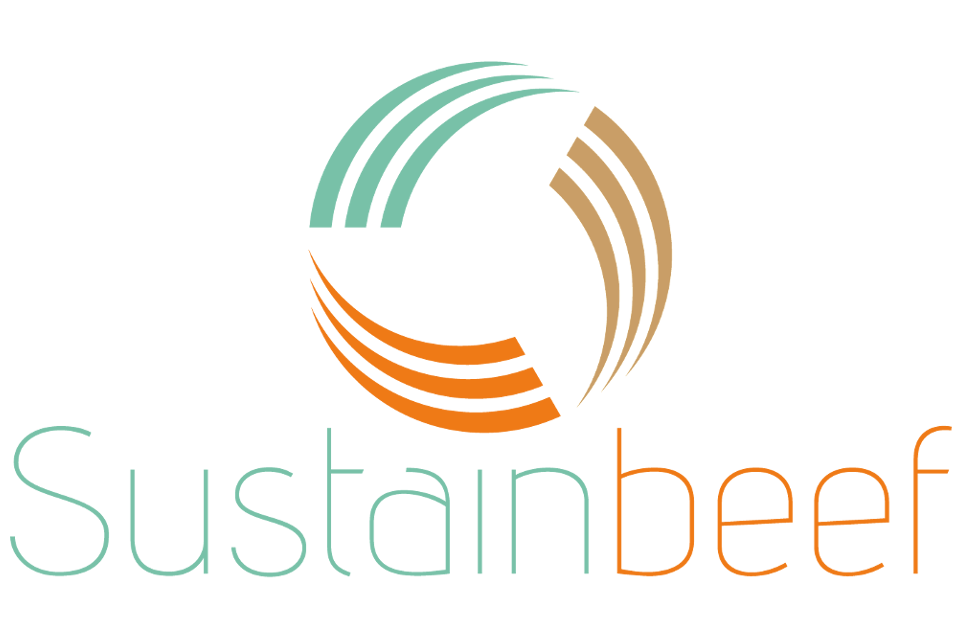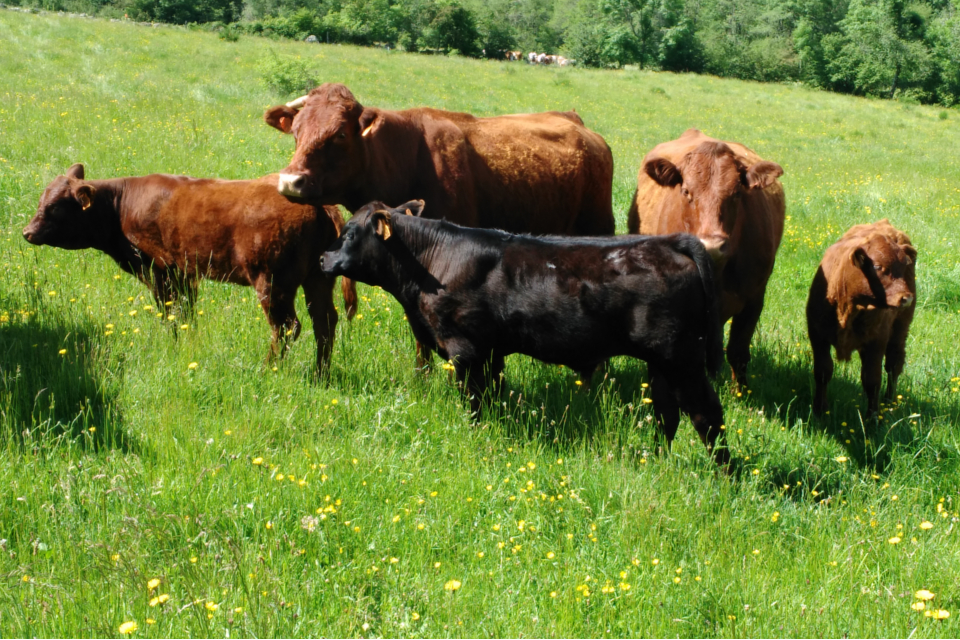Feed-food competition in beef farming: the basis of the project
The growing world population and climate change are increasingly challenging the current use of resources. In addition, the high volatility of food prices threatens food security. In this context, livestock farming is regularly criticised for being in direct competition with humans for the use of food. This concept is called "feed-food" competition.
Because of their low gross efficiency (the amount of feed needed to produce one kg of meat) compared to monogastric animals, cattle are particularly singled out. However, cattle are ruminants. Therefore, they have the capacity to convert resources that cannot be consumed by humans into foodstuffs (milk and meat) with a high nutritional value. Indeed, grass generally forms the basis of their diet and is supplemented by co-products of the agri-food industry such as beet pulp.
With this in mind, a number of scientists have looked into the calculation of net protein efficiency. Net protein efficiency, unlike gross protein efficiency, only takes into account proteins that are consumable by humans (see Figure 1).
This paradigm shift, although still imperfect (e.g. not taking into account the quality of the type of protein produced), allows for a more accurate approach to the capacity of livestock to contribute to the production of food for humans.
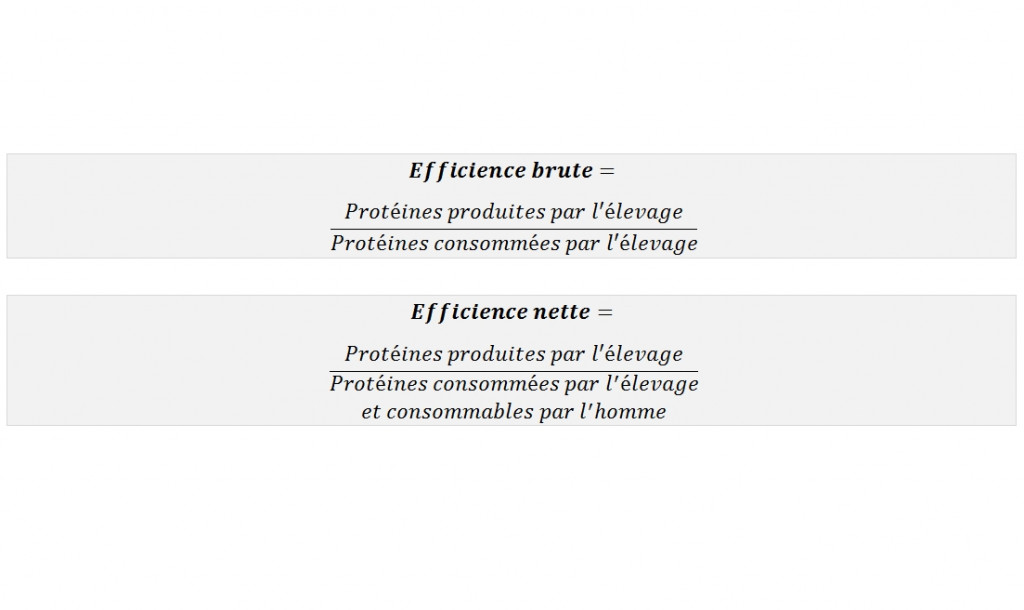
SustainBeef: evaluation of transition scenarios for European beef farms towards less feed-food competition
The project therefore hypothesises that among beef production systems, those that rely primarily on the use of grassland and non-human enable agro-industrial resources are more sustainable than those that use human enable feed or that have been produced at the expense of human food.
In order to assess the sustainability of these systems, the project focuses on the competition dimension of feed-food, but also on economic viability and environmental impacts. The project is based on a multi-criteria modelling assessment of typical beef production systems across northern Europe. The bioeconomic optimisation tool used in the project is FarmDyn. Innovations with the potential to reduce feed-food competition were identified at the beginning of the project. They were then introduced into the modelling to quantify their impacts (positive or negative) on the typical systems.
In a first step, fifteen systems representative of different European regions were defined (see Figure 2 - https://chrispahm.github.io/SustainBeef/). In Wallonia, four types of systems were selected: two suckling systems (extensive and intensive), one suckling and fattening system and one dairy system. By calculating the net protein efficiency of these systems, we observed that extensive grass-based systems and those that valorise co-products (IT-F1) are often net protein producers but require a larger surface area to produce the same amount of carcass.
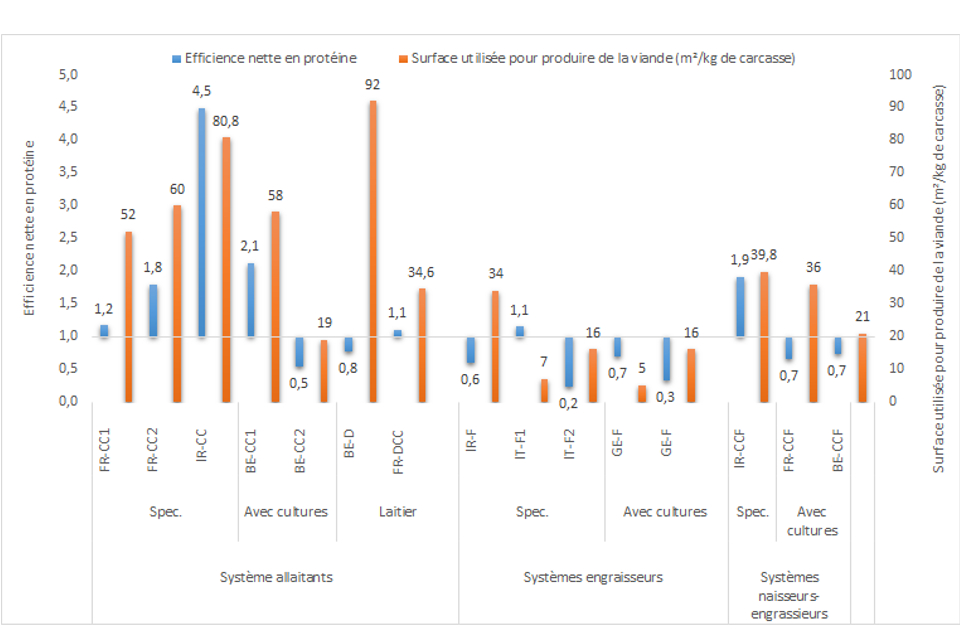
The list of "innovations" with the potential to reduce feed-food competition was then established on the basis of scientific and technical literature. This list of innovations was then submitted to experts for validation before being discussed with a variety of farmers and value chain actors.
These groups helped to highlight the barrers and levers to the integration of these innovations at the farm and sector level. They also made it possible to identify the innovations considered most relevant by the participants.
On this basis, 45 scenarios (111 simulations) implementing the most popular or most debated innovations were carried out in the representative systems of each partner region. This made it possible to assess the impact of these innovations on the net efficiency of these systems and on other sustainability criteria.
Beyond these scenarios, some innovations have been selected by all the partners and have therefore been further developed.
These are grass fattening through dynamic rotational grazing and cross-breeding. In our case, the crossbreeding is done either with the aim of producing animals that are better adapted to grazing, or to produce calves with a more carcass conformation via the terminal crossbreeding technique.
In order to take into account the final meat production, the production systems were combined. Indeed, in Wallonia, the systems are generally specialised either in young bulls prodcution or in fattening them. These two systems were therefore combined in order to offer a finished product that can be consumed by humans.
The first approach is therefore to maximise the value of the grass produced on the farm using the technique of fast rotational grazing (rapid rotation of animals on small plots). The results show that for an intensive cow-calf system, dynamic rotational grazing (Figure 3 - FRG) is of limited interest. Indeed, only a slight improvement of the different criteria (greenhouse gas production, feed-food competition, workload and income) is observed.
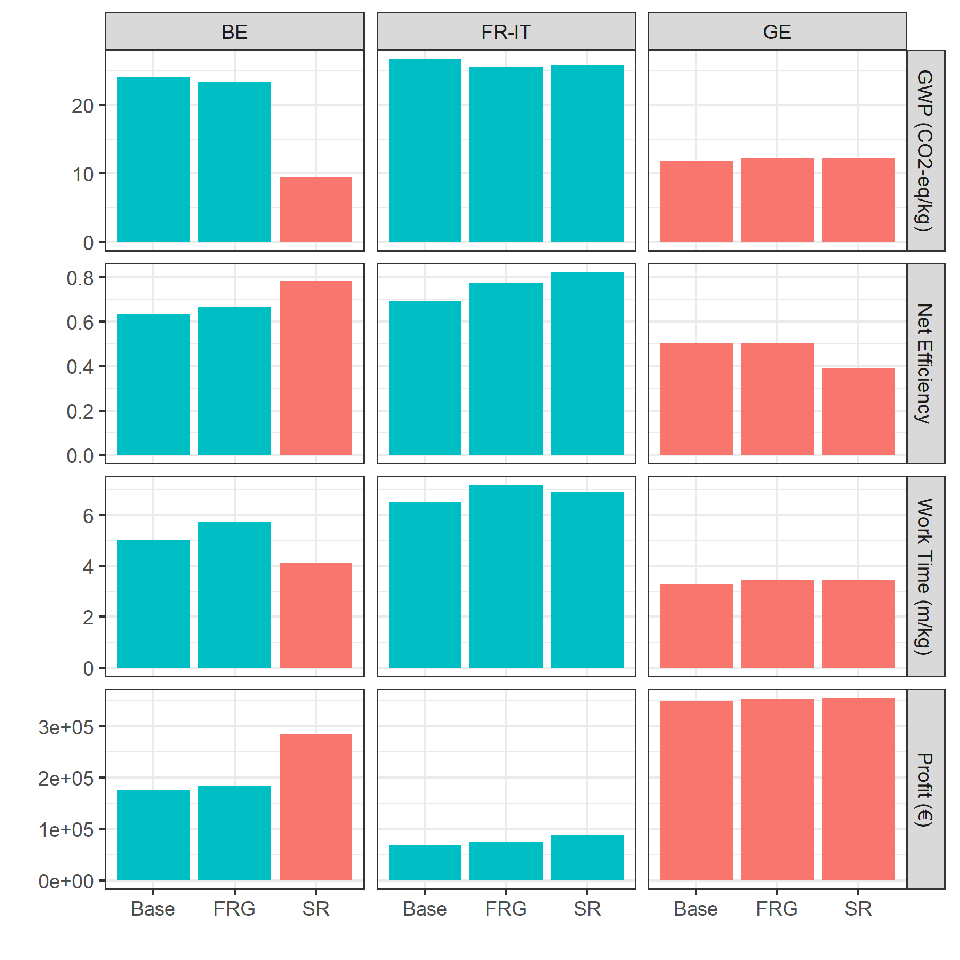
The second Walloon approach concerns the breeding of calves resulting from terminal crossing, i.e. between dairy cows and Belgian Blue bulls by artificial insemination. The principle is to produce animals that are more productive in terms of quantity of meat while at the same time making the most of animals that also produce milk. The results here are much more promising. Indeed, all the indicators show a great improvement (figure 3 - SR) with, for example, greenhouse gas emissions divided by 3. This can be explained by the dual purpose of milk and meat production in such a system.
SUSTAINBEEF: a participatory and theoretical approach to identify the practices and experiments of tomorrow
The participatory approaches made it possible to involve all the stakeholders in the sector, especially the farmers. The methods used in the SustainBeef project were documented in order to be transposed to other projects.
Modelling permit to characterise, in a theoretical way, the impacts of the implementation of innovations on livestock farms.
These approaches have shown the theoretical potential of some innovations. They also raise new questions that require further experimentation in order to refine the results obtained and to verify their feasibility at farm level. New questions were also raised by stakeholders, notably the problems of competition with other purposes (energy production, road construction, etc.). Dependence on the agro-industry was also pointed out as an obstacle to the implementation of certain innovations and a reflection on the scale of the sector is necessary.
Co-Financing
